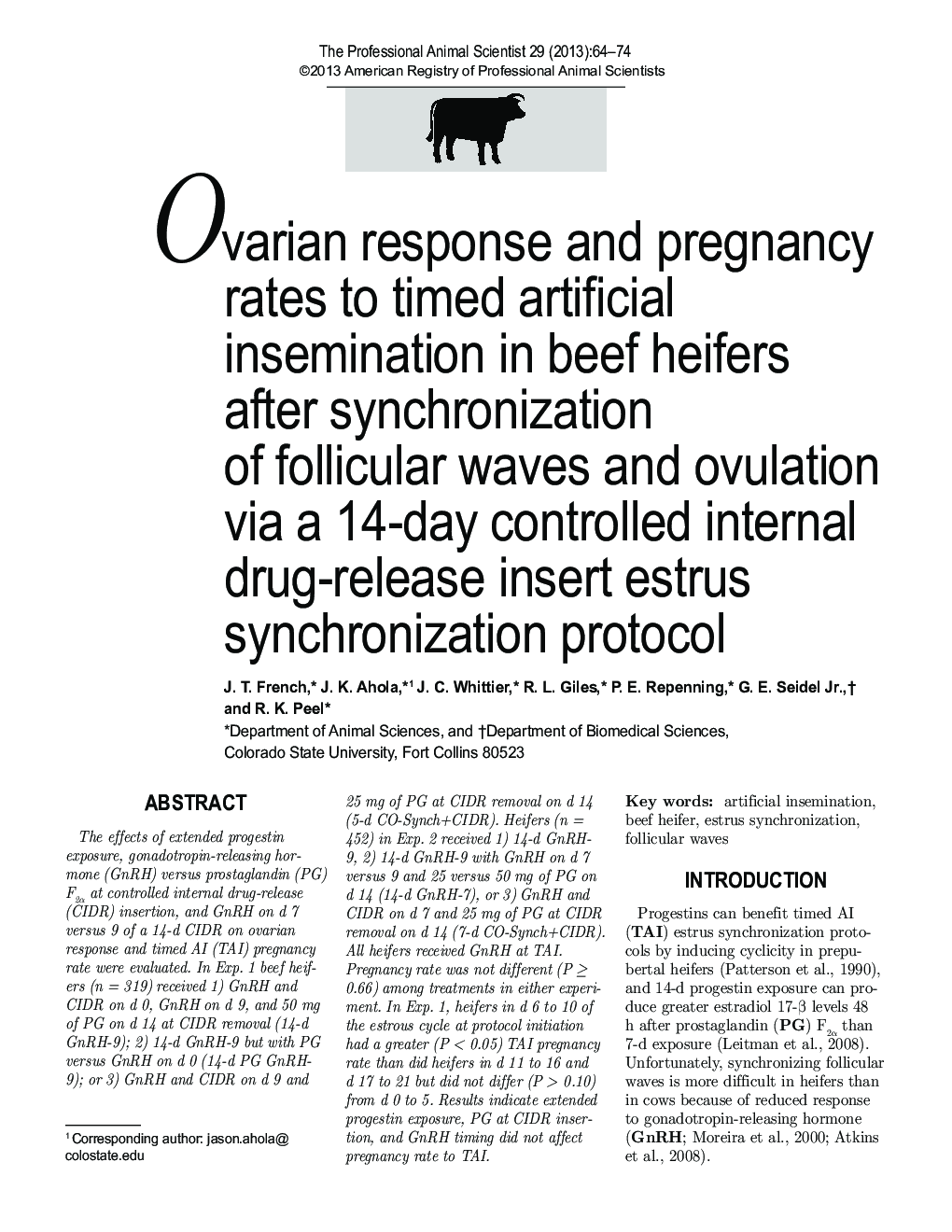| Article ID | Journal | Published Year | Pages | File Type |
|---|---|---|---|---|
| 2454040 | The Professional Animal Scientist | 2013 | 11 Pages |
Abstract
The effects of extended progestin exposure, gonadotropin-releasing hormone (GnRH) versus prostaglandin (PG) F2α at controlled internal drug-release (CIDR) insertion, and GnRH on d 7 versus 9 of a 14-d CIDR on ovarian response and timed AI (TAI) pregnancy rate were evaluated. In Exp. 1 beef heifers (n = 319) received 1) GnRH and CIDR on d 0, GnRH on d 9, and 50 mg of PG on d 14 at CIDR removal (14-d GnRH-9); 2) 14-d GnRH-9 but with PG versus GnRH on d 0 (14-d PG GnRH-9); or 3) GnRH and CIDR on d 9 and 25 mg of PG at CIDR removal on d 14 (5-d CO-Synch+CIDR). Heifers (n = 452) in Exp. 2 received 1) 14-d GnRH-9, 2) 14-d GnRH-9 with GnRH on d 7 versus 9 and 25 versus 50 mg of PG on d 14 (14-d GnRH-7), or 3) GnRH and CIDR on d 7 and 25 mg of PG at CIDR removal on d 14 (7-d CO-Synch+CIDR). All heifers received GnRH at TAI. Pregnancy rate was not different (P ⥠0.66) among treatments in either experiment. In Exp. 1, heifers in d 6 to 10 of the estrous cycle at protocol initiation had a greater (P < 0.05) TAI pregnancy rate than did heifers in d 11 to 16 and d 17 to 21 but did not differ (P > 0.10) from d 0 to 5. Results indicate extended progestin exposure, PG at CIDR insertion, and GnRH timing did not affect pregnancy rate to TAI.
Related Topics
Life Sciences
Agricultural and Biological Sciences
Animal Science and Zoology
Authors
J.T. French, J.K. Ahola, J.C. Whittier, R.L. Giles, P.E. Repenning, G.E. Jr., R.K. Peel,
